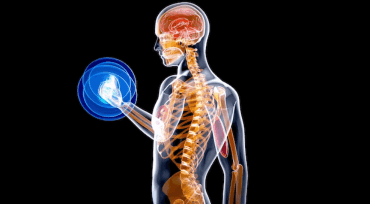Question
a.
6 x 10⁸
b.
5 x 10⁸
c.
7 x 10⁸
d.
3 x 10⁸
Posted under Analytical Instrumentation
Interact with the Community - Share Your Thoughts
Uncertain About the Answer? Seek Clarification Here.
Understand the Explanation? Include it Here.
Q. Spectroscopy deals with interaction of electromagnetic radiation with matter. What is the speed of this radiation in vacuum in m/s?
Similar Questions
Explore Relevant Multiple Choice Questions (MCQs)
Q. Which type of Quantum Transition takes place in Ultra Violet and Visible spectroscopy?
View solution
Q. Which of the following is not a property or parameter of electromagnetic radiation?
View solution
Q. Which of the following is not a type of Spectroscopy?
View solution
Q. Electromagnetic radiation can travel through a vacuum.
View solution
Q. Which of the following is false about the wavelengths of electromagnetic radiation?
View solution
Q. Which of the following is the wavelength of microwave radiation?
View solution
Q. How is the wave number of electromagnetic radiation related to wavelength?
View solution
Q. Which of the following is the wavenumber of UV and Visible radiation?
View solution
Q. Velocity of electromagnetic radiation is more in a vacuum than in any medium.
View solution
Q. Beer Lambert’s law gives the relation between which of the following?
View solution
Q. In which of the following ways, absorption is related to transmittance?
View solution
Q. Which of the following is not a limitation of Beer Lambert’s law, which gives the relation between absorption, thickness and concentration?
View solution
Q. Beer’s law states that the intensity of light decreases with respect to ___________
View solution
Q. Lambert’s law states that the intensity of light decreases with respect to __________
View solution
Q. The representation of Beer Lambert’s law is given as A = abc. If ‘b’ represents distance, ‘c’ represents concentration and ‘A’ represents absorption, what does ‘a’ represent?
View solution
Q. Which of the following is not true about Absorption spectroscopy?
View solution
Q. Transmittance is given as T = P/P₀. If P₀ is the power incident on the sample, what does P represent?
View solution
Q. What is the unit of absorbance which can be derived from Beer Lambert’s law?
View solution
Q. What is the unit of molar absorptivity or absorptivity which is used to determine absorbance A in Beer Lambert’s formula?
View solution
Q. Which of the following detectors does not require a battery and is also known as barrier layer cell?
View solution
Recommended Subjects
Are you eager to expand your knowledge beyond Analytical Instrumentation? We've handpicked a range of related categories that you might find intriguing.
Click on the categories below to discover a wealth of MCQs and enrich your understanding of various subjects. Happy exploring!








